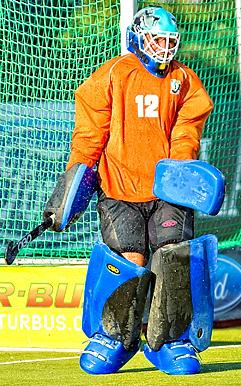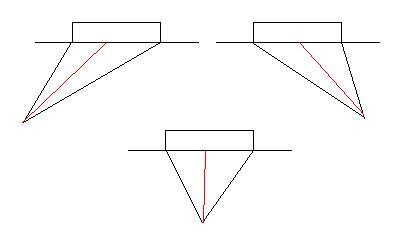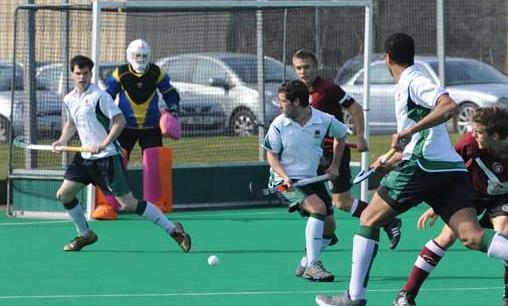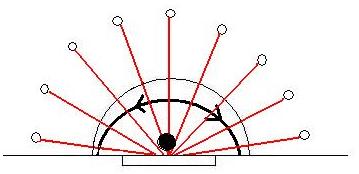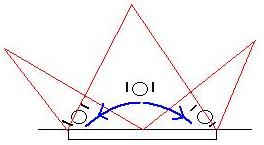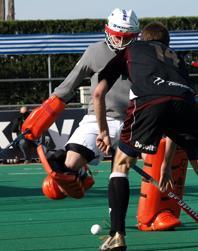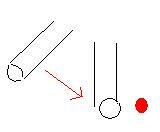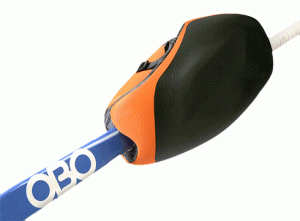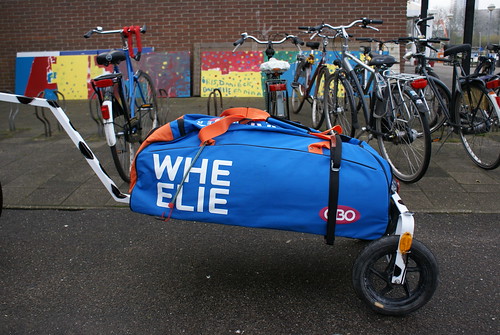So I’ve had these high rebound kickers for just over a year now, and I have to say, they are probably the best piece of equipment I’ve invested in. They’re light, and best of all they look slick.
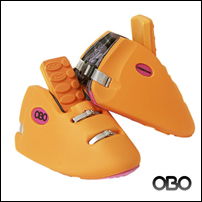
I play quite a mixed game, running around the place a lot, staying on my feet, unless faced with a situation where I need to slide/dive. The high rebound kickers suit everything perfectly. I’d like to think I play at a relatively high level, although there’s higher, I’m happy to announce that I’ve had no major injuries at the time of talking. Sure I’ve had the odd knock, and the rare shot that’s hard enough will hurt you even through the kickers, but the average shot is barely even felt when kicking/blocking the ball.
The size and shape of it is another point that’s worthy of note. Other kickers I have tried, your shoe barely fits in with a normal hockey shoe. So you need to go for one of the football astroturf shoes, which well, offer less protection than the hockey shoes do, due to the materials used and that the soles are about 2mm thick. The shape of these fits any sort of shoe, forgetting the shoes you wear for keeping is no longer a problem, as any old pair of runners you own will do the case with these kickers. The integrated locking system is perfect too, only on the most desperate of dives and attempts have I ever experienced any sort of a problem with twisting of the legguard, and even then the twisting is minimal, and you’re still highly protected. Considering my legguards are rubbish and had to be brought into the shop to get most of it replaced, I had a TK leggaurd for the most part of a week, and even with them, they work perfectly, even if the people here may think of the TK gear as “unclean”
They come in flat pack, which obviously isn’t great. It means you need to wear then in and all, but I’ve found the advice given with the kickers, about the hair dryer to mould them to help a lot. I was originally scared when buying them, that they’d take too long to mould, and I had trials for a representative squad coming up. But I found that after about a week of wearing them in at training, I was already able to wear them perfectly, and they’d nearly taken shape, and I had no problems with the tongue. Although a small word of advice, should you have a problem with the tongue, don’t be afraid to wear a pair of shin guards underneath the kickers till they reach comfort levels. Just don’t do it too long, as the most important person on the pitch you don’t want to be looking like a sissy do you?
The rebound levels are perfect! I bought the kickers not really knowing what to expect in that regard. I stepped out onto the pitch, and immediately loved them due to the rebound off them. I don’t know how many times I’ve been able to get the ball up to my strikers, and set up a scoring opportunity, which as a keeper is always an added bonus. You don’t need to put particular attention into clearances any more either, on the quicker shots you simply need to react, and watch the ball fly! The rebound can have a drawback though, It the ball comes up off the kicker, its really comes up. A slightly raised ball coming off the kicker will go playing across the D, and has often resulted in a short corner. Not that great in that respect.
I know at this stage I’m waffling on a bit about how great these things are, and to be honest with you, I am dragging on about their greatness. But its alright, because they deserve it, or at least they deserve a longer review then one on yourself. The straps, so that I can make it a slight bit longer, are brilliant. They’re not those weird plastic things, with the whole, like a belt, that other company’s use, and that take about 8 minutes of your very valuable time to put on. Nor is the buckle to small, so it holds tight, which is great, it means its secure, and whatnot. Trust me, its a good thing. The kicker straps are good too. Durable, and they’re inside, making the kicking surface on the outside of the kicker bigger, which again, is good.
Although there’s a huge amount of pluses with the high rebound kickers, there some minor drawbacks that annoy me:
The front Strap: The front strap for the kickers needs to be brought back a good 1 to 1.5 centimetres. When sliding I often encounter the problem that I end up with that strap between the padding and my shoe, leaving the kicker pointing up towards the sky, and my toe vulnerable to anything the striker decides to throw at it. There’s that extra strap to hold them together, but it gets in the way a bit, and sort of annoys me. Bring it back as I said, and it should be all good.
Wearing: Although the hard wearing layer at the bottom of the kicker is brilliant, there’s some big problems with the wearing that the kicker encounters. After about 8 months the hard layer wears away at the bottom, probably even quicker if playing on older sand based or grit pitches. Ever since then the kicker has been disintegrating at a rapid rate, and although its going to last at least another season, I’d like to see the kicker last a little bit longer, as they can be a bit of a drain on the back pocket of a teenager. I’m not really sure if there’s anyway to fix this, apart from make the durable layer thicker or something
We need green! Although the orange that I have is bright and sexy, I don’t really think there’s enough of a colour option in the kicker department. We have black, blue and orange, and it just isn’t enough. I like being individual, and as everybody knows, if you look good you feel good, and you’ll play good. I want something mental to head out in, like green kickers, and white and orange legguards, You know, go for that Irish look, and if its dazzling, the opposition will have something pretty to look at as they fail to get the ball past me.
Very minor niggles there, especially the last one, which is why I’m gonna conclude in saying that anybody that doesn’t buy these things the next time they’re out to buy a set of kickers, is a fool, and deserves to rot in the world of mediocre kickers, lower leagues, and sore feet. Straight out (well not quite) 9/10 for me. They do everything they have to and more, they just need the odd adjustment and whatnot. But I apart from my 3 little points, I’m not sure where the improve the little beauties. Buy them, buy them now! And no, they do not stink! I would also like to apologize for my horrible spelling.

